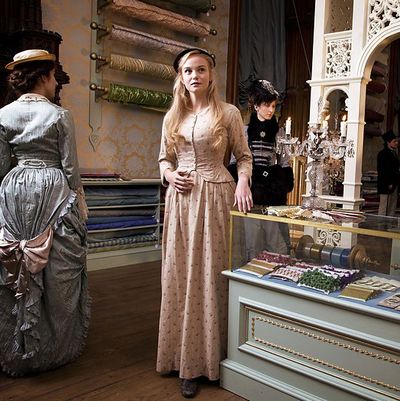
Across the American landscape, shopping malls are decaying. Retail outlets are fleeing, customers are shopping elsewhere, and the structures are deteriorating. Today, The Atlantic reports that a third of the 1,200 indoor malls in the U.S. are in decline. America — like Denise in The Ladies’ Paradise — felt that “all this amiable luxury wounded her with its indifference.” The country began a highly melodramatic jilting process, leaving these curated palaces of distracting consumerism in the dust. So it happens: As buildings, malls have proven useless, but as symbolic buildings, malls have proven very useful.
Dejected shopping centers have been the subject of many ruin-porn photo essays. These usually carry haunting overtones about the fate of America. A deserted mall was an essential set piece in Gone Girl, as a symbol of a withering American Midwest town (and also the spoiled institution of marriage? Who knows!). In the book, Nick Dunne encounters a camp of dangerous homeless druggies in a shopping mall that had been the pride of his hometown. Gillian Flynn writes that the mall “was suburbia, post-comet, post-zombie, post-humanity.” There is a dried-up fountain and Nick gets directions “past where the carousel used to be” from a man who looks like “a despoiled Jesus.”
As early as 1975, writers employed American malls as relics of the past. In her essay “On the Mall,” Didion wrote that malls “float on the landscape like pyramids to the boom years” and “to hear their names is to recall words and phrases no longer quite current. Baby Boom. Revolution. Suburbia.” In the same essay, Didion expressed hopes that she might one day own a mall, or specifically “a Class-A regional shopping center with three full-line department stores as major tenants.” Now, many are available for her purchase, not that she has been making any real-estate moves in this direction.
Didion should act fast. Malls won’t be around for symbolic use forever. The Atlantic’s Alana Semuels reports that developers are snatching up abandoned shopping centers to repurpose them as hospitals, schools, churches, and parks. Currently, 211 enclosed American malls are being retrofitted. In Austin, Texas, the formerly imperiled Highland Mall has been given over $300 million in funding to build a STEM simulator lab and digital-media center for the Austin Community College. Downtown Columbus’s City Center Mall, which closed in 2009, is now a park with a bocce court and performance space. A bocce court? Reclaimed planted space? Whatever will Bill Bryson grouse about now?
Let us think about what it will mean for the metaphor community if the abandoned mall is repurposed. Out of respect for literary tradition, we must hold onto these crumbling buildings. As they decay, as they fill with snow and drifters, their symbolic function will only mature.




